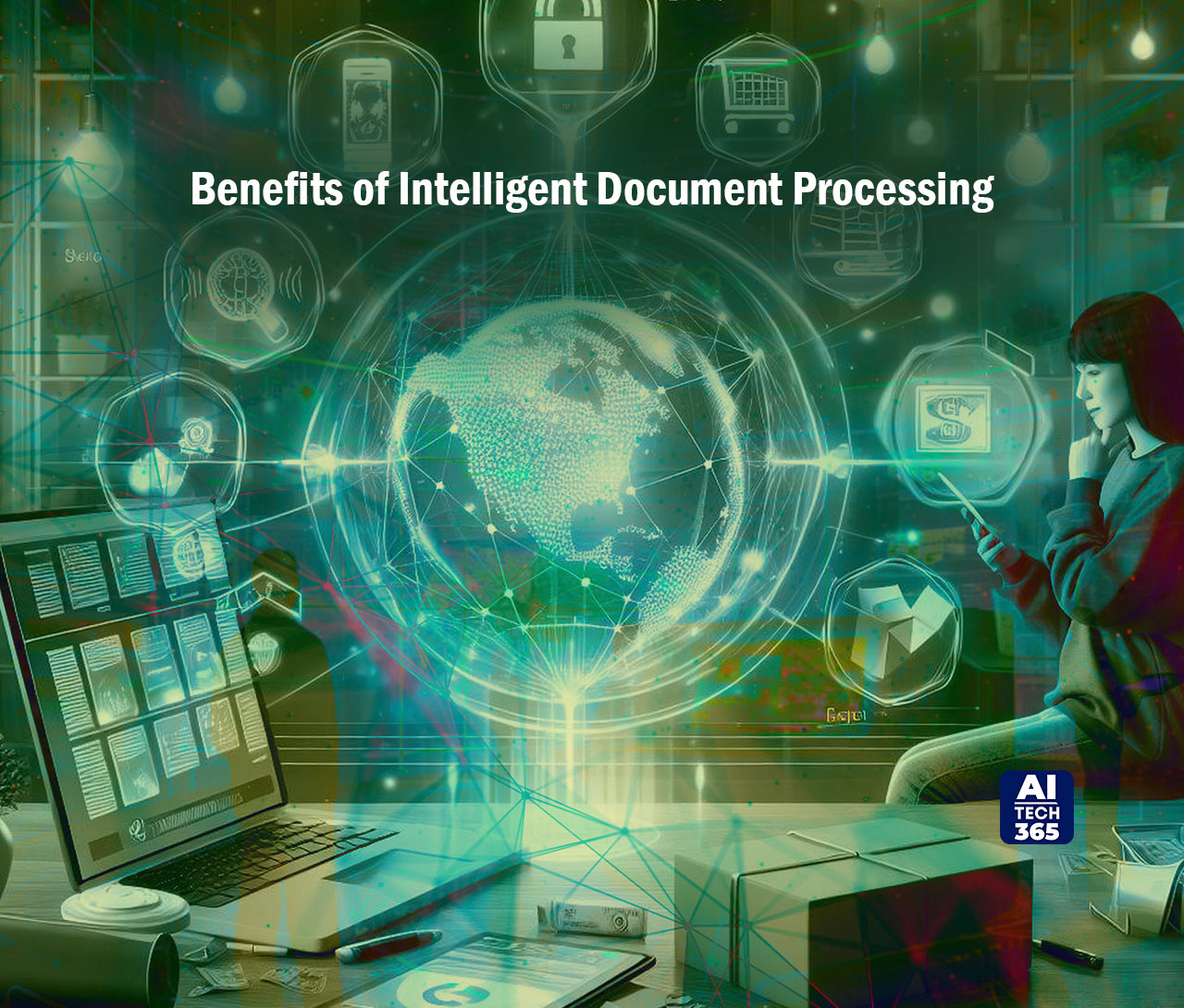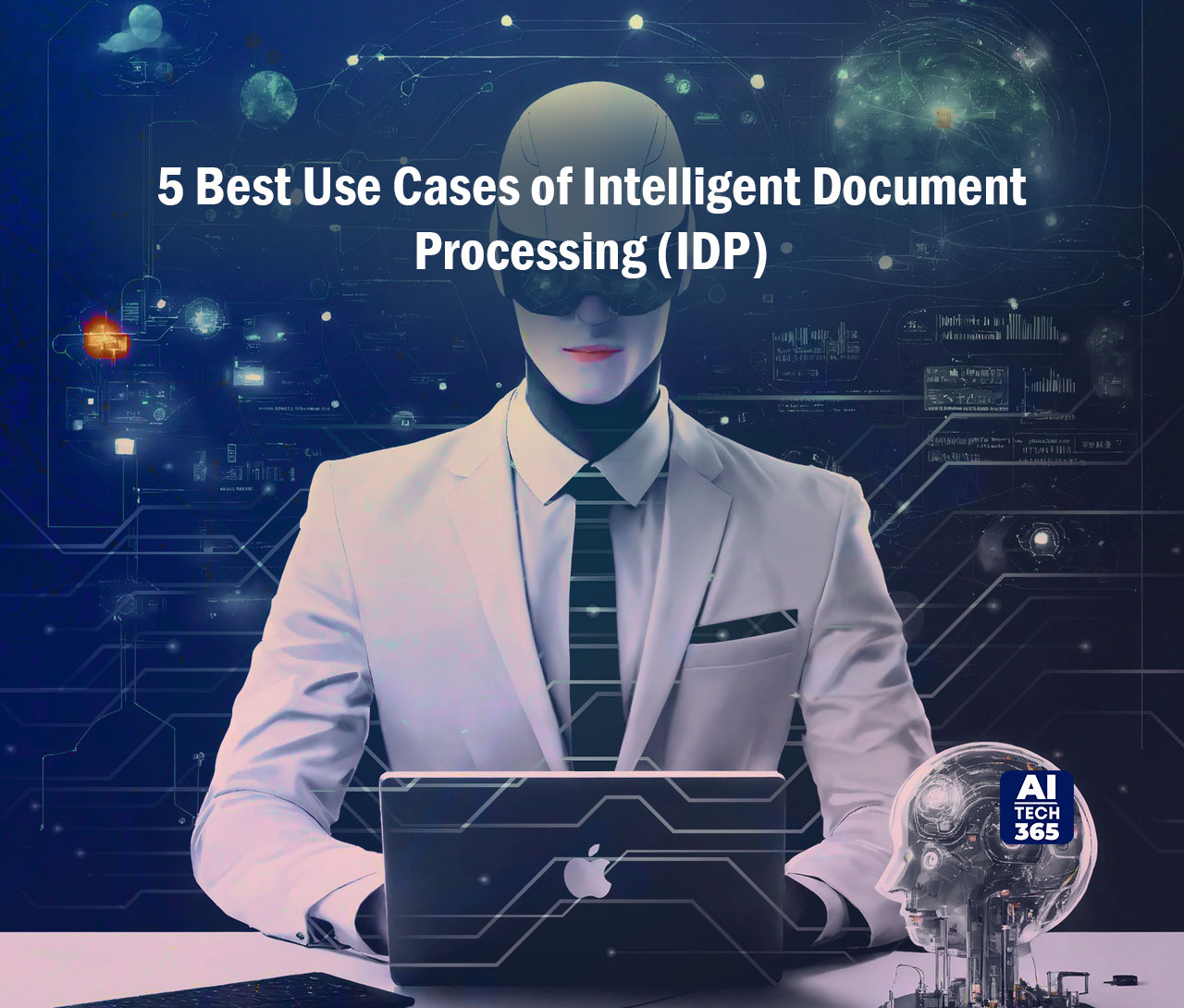Nowadays, most organizations generate massive amounts of data, making it difficult to search for relevant information. Every day creates 328.77 million terabytes of data. Trying to mine large datasets for useful data can be expensive and takes a lot of time. This is where the AI document processing method like intelligent document processing (IDP) comes in handy.
Intelligent Document Processing (IDP) technology refers to a document capture workflow automation tool that analyzes, reads, extracts, organizes, and stores valuable information in meaningful formats from high-volume streams of data. This article will explain IDP, its benefits, and its working mechanisms.
What is Intelligent Document Processing?
Intelligent document processing (IDP) technology involves capturing data from documents and structuring it in a way that allows business process automation.
IDP combines optical character recognition (OCR) with machine learning (ML) and artificial intelligence (AI), effectively facilitating complex automated tasks with variable format documents.
The scope of IDP is not limited only by traditional OCR’s mere reading of texts and extracting data from documents. But, it also provides contextual meaning to the recognized text. Some of the popular tools include Microsoft Syntex, Azure AI, Document AI from Google, Datakeen, etc.
Benefits of Intelligent Document Processing
Check out these awesome benefits:
- Improved Efficiency: With IDP, you can say goodbye to manual document workflows. It automates all those time-consuming tasks, so your employees can focus on more valuable work.
- Time and Resource Savings: No more wasting time on data entry and document handling. IDP takes care of it all, saving you precious time and resources.
- Increased Accuracy: IDP extracts and organizes data automatically, so there’s no need to verify manual entries.
- Efficient Workflow: IDP integrates with your systems and workflows and makes document-driven processes easy. It bypasses manual steps, accelerates cycle time, and increases the efficiency of any process.
- Better Customer Experience: This translates to faster onboarding and claim-staging for your customers. This means faster turnaround times, greater overall accuracy, and a better customer experience.
- Meets Legal and Compliance Needs: IDP ensures your documents are processed and data is captured accurately and consistently, no matter the volume. This helps your organization stay compliant and keep up with ever-changing regulations.
- Custom and Flexible: IDP allows you to create customized workflows and document handling processes. It brings flexibility to document processing and easily conforms to the needs of your organization.
- Data and Insights: IDP takes unstructured data from documents and transforms it into actionable, structured data. This data can then be easily integrated into other applications or workflows to fit the needs of your organization. Intelligence and insights can be gleaned from the data, which can then be used to drive efficiency and make better overall decisions.
Also Read: How is AI Data Management Transforming Businesses?
These benefits make IDP a must-have tool for optimizing your business operations.
How does IDP work?
Intelligent document processing involves a few steps.
The first step is smart document recognition, where IDP uses deep learning AI with complex systems to scan documents and classify them. This technology can be trained in up to 190 languages and is capable of reading and interpreting documents much like a data processing worker would.
After this classification, the intelligently automated document software begins extracting valuable information. This process is done through cognitive AI technologies that pick out specific pieces from large volumes of text. It then arranges the relevant information in such a way that it becomes easier to access. This can include text, numeric values, and even images or signatures. Extraction uses OCR, machine learning, deep learning, NLP, and Google Vision.
Following that is domain-specific validation by applying logic, regular expressions (RegEx), rules, and scripts to evaluate the accuracy and relevance of extracted data for a specific industry or business context. Furthermore, improved validation using robotic process automation (RPA) can cross-check the suitability of extracted data for prescribed purposes or processes.
The final step is human-in-the-loop (HITL) validation, which increases the quality of automated data processing. HITL validation leverages supervised learning to provide rapid feedback loops and refine AI training by correcting data through human input.
What Is the Difference Between OCR and Intelligent Document Processing?
OCR and IDP are closely related technologies, but the main differences lie in their functions. The primary focus of OCR is recognizing characters and turning images of text into editable text. It transcribes documents and provides a text representation of the image, but does not comprehend the text’s meaning. IDP, on the other hand, goes well beyond OCR by adding AI, ML, and other intelligent processing techniques that help extract and process data from a wide range of documents.
IDP understands the context and meaning of the text, allowing for higher-level data extraction, organization, and automation of document-centric workflows. IDP overcomes the limits of OCR in handling unstructured data, improving accuracy, and providing more comprehensive document processing capabilities. IDP can ensure that organizations can meet a greater level of efficiency, accuracy, and automation in their document processing workflows.
5 Best Use Cases of Intelligent Document Processing (IDP)
These are some of the leading use cases for IDP.
- Accounts Payable: IDP can automate invoice processing, extracting relevant information like supplier details, invoice numbers, and line items. This makes the accounts payable process more efficient by reducing manual errors and also streamlining it.
- Customer Onboarding: IDP can automate the extraction and verification of customer information from various documents, such as identification papers, application forms, and contracts. This makes onboarding faster, improves integrity, and enhances the customer experience.
- Claims Processing: IDP can automate the extraction and validation of data from insurance claim forms, supporting documentation, and policy documents. Henceforth, this speeds up the claim processing workflow reduces errors in claim handling activities, and thus enhances efficiency.
- Compliance and Regulatory Reporting: Concerning regulatory documents, IDP can help automate extraction and analysis processes to ensure compliance with industry regulations and facilitate accurate reporting.
- Contract Management: Through contract management, one may have automated extraction of key dates from contracts, i.e., who are the parties involved? Which terms and conditions are specified in the contract? What important dates or time frames are mentioned? It can enhance the effective administration of contracts, improve visibility, and reduce manual review time.
Conclusively
Intelligent document processing is a revolutionary technology that empowers organizations to unlock the power of their data. By automating document types’ extraction, organization, and analysis, IDP streamlines operations, saves time and resources, and increases accuracy. IDP enables businesses to harness the power of data-driven insights to implement, improve decision-making, and deliver exceptional customer experiences. As organizations continue to embrace digital transformation, IDP is a powerful partner, transforming paperwork and paving the way for a more efficient and smarter future.


